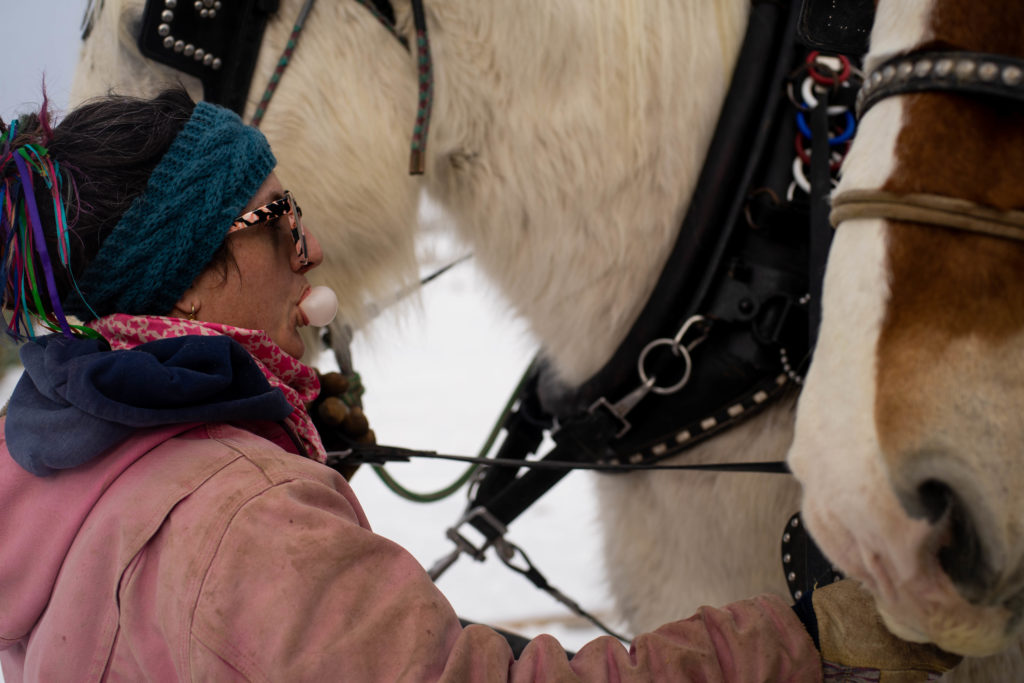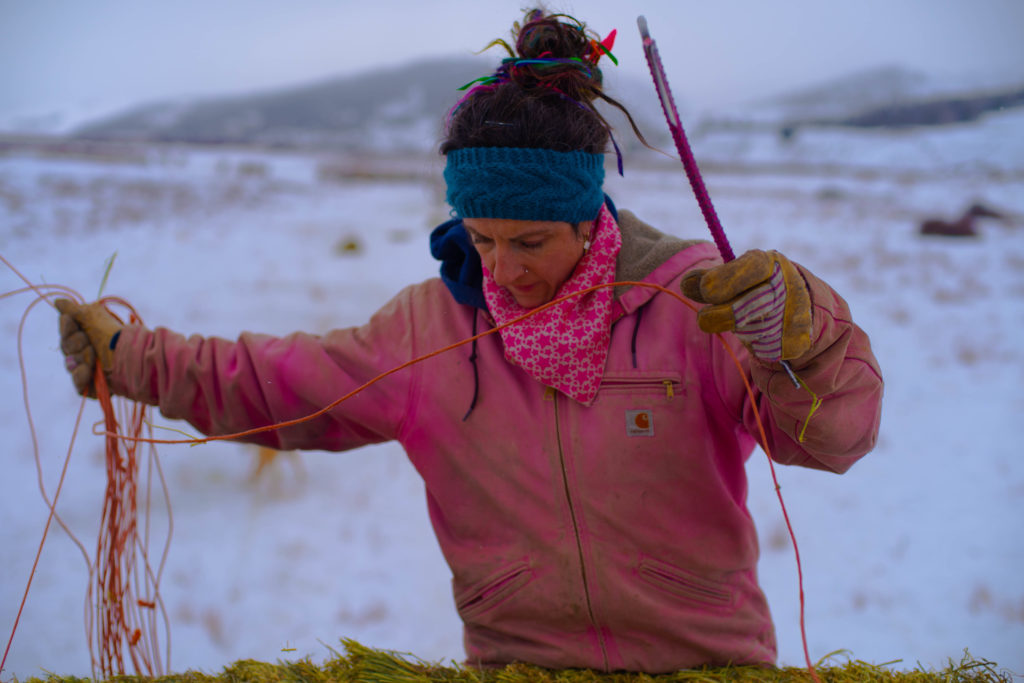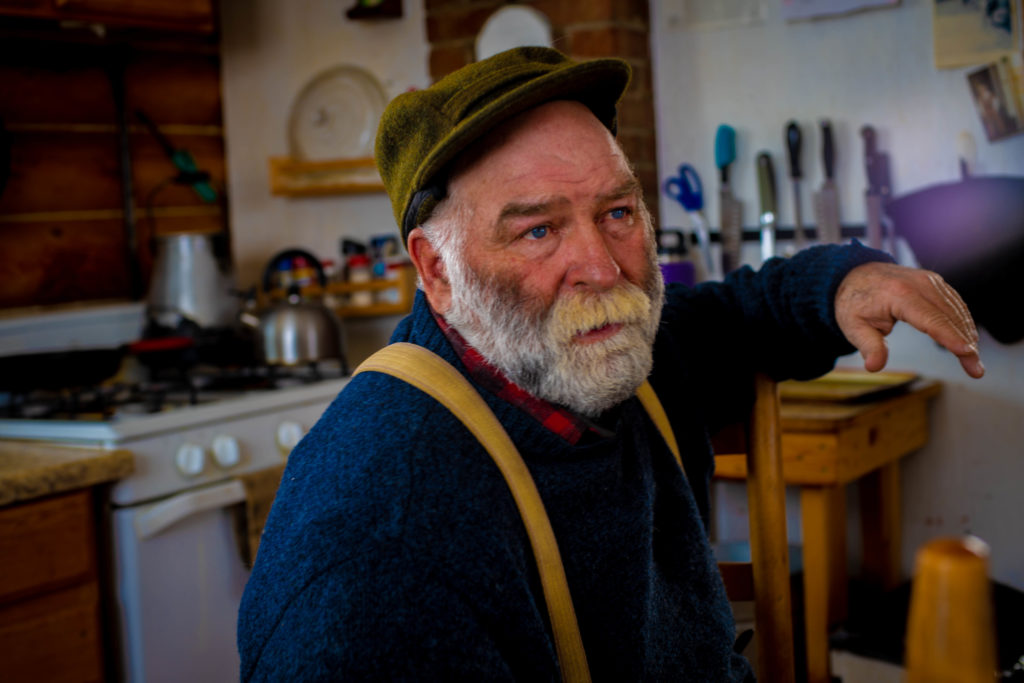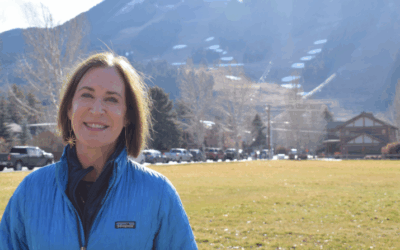There’s no shower, no flush toilet, and no cell service. Life in the Gros Ventre is about as off the grid as it gets.
“You always got the dogs to talk to,” said Jay Hoggan on a cold Saturday in January.
Surrounded by thousands of acres of wilderness, and thousands of elk, Jay is one of the few humans in these parts. “There’s too much stuff going on to get lonely,” he said. “If I get bored or whatever, I’ll go down, oil one of them harnesses or fix what we broke.”
Jay spends the winter in the mountains about 40 miles northeast of Jackson along with his daughter, Rita, and his five-year-old grandson Howdy as his only company. A skilled horseman, Jay manages one of 22 elk feedgrounds owned by the Wyoming Game and Fish Department. The winter feedgrounds provide supplemental food for Wyoming’s prized game species, allowing for larger elk populations than native winter ranges can support. It’s a controversial practice, something critics warn could facilitate the spread of disease.
Born into a ranching family, Jay has spent his life around horses and cattle—and since 2006, elk. His family has never strayed too far from this corner of Wyoming.
“Rita growed up just a mile or two from where I was growed up,” Jay notes.
Most years, the 18-mile road to the feedground is covered in snow, and the only way in is by sled, which Jay said is one of the few parts he doesn’t like about his job. “They break down, break down, break down,” he said. “The toughest thing was them things, because you just couldn’t depend on them.”
But this year, snowfall is below average, and in late January, the route was still passable with a four-wheel-drive Dodge Ram. For Jay, it’s a reflection of how running the feedground has gotten easier over time due to a combination of warmer winters and the reintroduction of wolves.
“It’s the only job I’ve had that got easier and paid more money,” he said.
Loading 80-pound bales of hay, by hand, is a world away from Jackson’s so-called “billionaire wilderness” and the ski resorts that draw thousands of visitors to western Wyoming every winter. Jay’s is a way of life that few people living in the region experience. But as migration routes go, the Gros Ventre wilderness is prime real estate for the wapiti. And Jay said he doesn’t find elk to be very different from other herd animals–or even humans.

Two barns stacked with hay from alfafa and grass are delivered to the feedground each fall by semi. (Emily Cohen)
“Elk, horses, cattle, deer, everything come together in the wintertime,” he said. “I mean, heck, they’re going to come here and, I mean, if you’re feeding, they’re going to congregate here. Just the same way with us. We’re going to go over to the lunch line.”
The elk lunch line serves hay, stacked two stories high, which is delivered by semi trucks each fall. Every day, from November through April, Jay and Rita hitch their horses to a sleigh to fill with bales of grass and alfalfa, one heavy bale at a time. Depending on snow depths, the pair loads anywhere from 50 to 150 bales a day. The deeper the snow, the more hay is needed. And there are no weekends off, or holidays. The work must be done; the elk must be fed.
Loading the sleigh requires careful coordination between father and daughter. Their system of tossing and catching bales from a shed to the sleigh is a well-orchestrated ballet. Once loaded, the sleigh is pulled by two draft horses, with Jay at the reins. While he drives the hour-long route on the feedground, Rita cuts the twine from the bales and disperses the hay. Howdy often gets pulled behind on a saucer, squealing with delight and deftly maneuvering the obstacle course of hay that his mother manifests.
Jay’s piercing blue eyes, weathered skin and white beard paint a portrait of a man who has spent life in the elements. And Rita, strong as her father, wears her rainbow-colored hair in dreadlocks. Coming out to the refuge to work with her dad helped them reconnect after years of not speaking. But this may be her last winter in the Gros Ventre.
“Howdy is going to start school. So, then I have to be in Idaho,” she said. “Got to be a nuclear scientist instead.”
She’s not kidding. Rita was a nuclear scientist at Idaho National Labs before giving birth to Howdy. Her dad, though, always worked with animals.
“I had a rodeo company, and so in the summer [it was] busy, busy, busy. Just busy,” Jay said. “And then, when October came, then the rodeo season stopped here. And so I would have to go work cowboy.”
Jay still works at ranches in the summer, usually up in Montana. He’s content with the seasonal work and variations of his vistas.
“I love watching the elk. Elk are amazing. They know when to pick up and move. And they’re so athletic. They thrive everywhere, in the desert and in the mountains. They’re just a hell of a kind of a goat.”
When Jay looks out of the window of his two room cabin, he said much of the landscape he sees has been transformed by elk. “All the trails are from them walking up and down. That’s steeper than hell, and they just walk up and down that there like nothing.”
As the sun sets over the Tetons, the last light hits the elk trails on the buttes north of the feedlot. Bedtime is early. But there’s just enough light for a card game before it’s time to call it a night.









